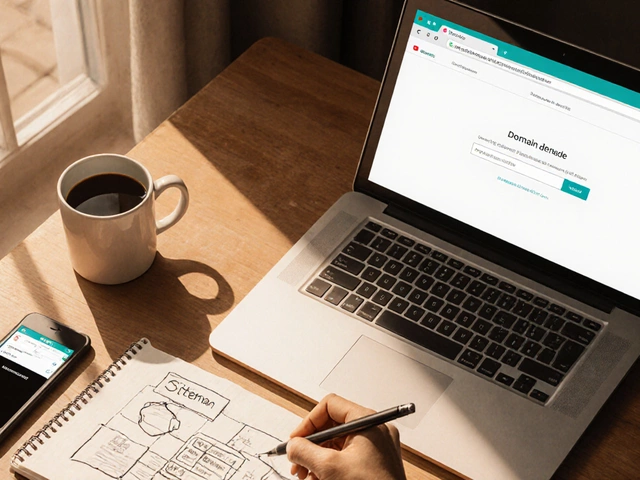Ever wonder why some blogs pop up on search results while others float somewhere in the abyss? If your words are out there for the world, they should be seen, right? The secret sauce lies in making your blog more search engine-friendly, sometimes referred to as SEO—Search Engine Optimization.
One biggie in the world of blog visibility is keywords. These are the terms folks type into search engines when they're hunting for something—your blog could be that something! Think of keywords as a map leading users to your content. Using the right ones, and in the right places, adds a layer of discoverability to your blog.
But it's not just about sprinkling keywords like magic dust. You need valuable content, structured right. Start with catchy titles, sprinkle keywords naturally, and make sure each post is a good read. And remember, it's not just bots reading—real people click on those links.
- Understanding Keywords
- Optimizing Content
- Enhancing Site Structure
- Boosting Engagement
- Leveraging Social Media
Understanding Keywords
So, what's the deal with keywords? Simply put, they're the words or phrases that people enter into search engines when looking for information. Think of them as a bridge connecting your blog to the readers searching for content like yours. But not all keywords are created equal. There are different types, and understanding them is your first step in making your blog more searchable.
Different Types of Keywords
First, you've got short-tail keywords. These are one or two words long, like "recipes" or "travel tips." They're broad and really competitive—lots of folks are trying to rank for them. Then, there are long-tail keywords, which are more specific phrases such as "easy dinner recipes for beginners" or "best travel tips for solo backpackers." These might attract fewer searches but are more targeted and less competitive.
Finding the Right Keywords
How do you pick the keywords worth your focus? Start by thinking like your audience. What would they type in to find your content? Tools like Google Keyword Planner can help you find out what people are searching for and how competitive those terms are. Look for a sweet spot where there’s good search volume but not too much competition.
Using Keywords Effectively
Once you've got your list, it's all about placement. Your primary keyword should be in the blog title, a couple of times through the body, and in headers if it makes sense. Don’t overdo it though; that's keyword stuffing, and search engines frown on that. Make sure your content still flows naturally.
SEO Stats to Consider
| Keyword Type | Search Volume | Competitiveness |
|---|---|---|
| Short-tail | High | High |
| Long-tail | Lower | Lower |
Focus on strategically using blog SEO techniques without compromising your readers' experience. If you get stuck, remember: you're ultimately writing for humans, not just algorithms. Get this right, and you're well on your way to boosting your blog's visibility. Happy blogging!
Optimizing Content
Getting your content just right is a big deal in the world of SEO. Okay, so how do you make sure your blog posts are something both people and search engines love? Let's break it down.
Crafting Quality Content
Your blog should be more than just a stream of consciousness. Aim for posts that are engaging and informative. Google's gonna check if you're delivering real value. Avoid thin content—meaning short, fluffy posts that don’t offer much substance.
Making Keywords Work
Embed your keywords naturally. Think about where they make sense—the title, headers, and naturally within the text. But remember, keyword stuffing is a big no-no. It's better if keywords flow with the content, not appear as if you’re force-feeding them.
Internal and External Links
Use links wisely. Internal links connect your posts and help your readers and search engines understand the breadth of your content. External links to reputable sources can also boost your blog's SEO credibility. Just be sure they're relevant to the topic at hand.
Meta Descriptions Matter
Think of meta descriptions as your blog's elevator pitch. They’re the short snippets that show up in the search results. Use them to highlight what your post is about, and don't forget to include a keyword if it fits naturally!
Visual Appeal and Speed
Got images? Awesome. Images can make your posts pop, but remember to optimize them for fast loading. Compressed files, alt text descriptions with keywords, and a sprinkle of creativity do wonders.
| Optimization Element | Effect on SEO |
|---|---|
| Quality Content | High |
| Keyword Placement | High |
| Linking Strategy | Medium |
| Meta Descriptions | Medium |
| Image Optimization | Medium |
Getting your content SEO-ready doesn’t have to be rocket science. With good content, meaningful keywords, and a few tweaks here and there, you'll be setting your Blogger up for success.

Enhancing Site Structure
Crafting a searchable blog doesn't stop at snazzy content and keywords. Your site's structure plays a massive role in how both users and search engines navigate your pages. A well-structured site helps search engines understand which parts of your blog are important and how different pages link together.
Prioritize Navigation
Imagine your blog as a city, and visitors need street signs to get around. Clear navigation is your street sign. It guides users and search engines alike, ensuring that every page can be easily reached. Aim for an intuitive menu, sticking to clear categories and logical hierarchies.
Internal Linking is Key
Ever been on a page and found a fascinating link that takes you on an engaging rabbit hole through related content? That's the power of internal linking. It's not just for user experience but helps search engines understand that your pages are connected and important enough to be highlighted.
Optimize for Speed
Speed matters—especially when you're trying to make your blog searchable. Fast load speeds improve user experience and are favored by search engines. Compress images, use a streamlined template, and consider plugins that minimize load times.
Consider Mobile Users
Did you know over half of website traffic comes from mobile devices? That means a mobile-friendly design isn't just a nice-to-have; it's essential. Ensure your site adapts to different screen sizes and devices, making navigation just as easy on a phone as it is on a desktop.
Here's a quick look at mobile traffic:
| Year | Mobile Traffic (%) |
|---|---|
| 2020 | 53 |
| 2025 | Expected 75 |
By enhancing your site's structure, you're not just making things pretty for users—you're paving a more visible path for search engines to rank your blog. Get the foundation right, and everything else will fall into place!
Boosting Engagement
So, you've got the content and keywords down, but how do you get readers sticking around and coming back for more? Engagement is the name of the game. A blog that's lively with comments, shares, and likes not only attracts more eyes but makes search engines love it too. Here are some hands-on tips to up your engagement game.
Encourage Comments
First off, make sure your readers know their thoughts are welcome. Ask open-ended questions at the end of your posts to encourage discussion. If someone takes the time to comment, be nice—acknowledge them and you’ll likely see more interaction. An active comment section not only keeps visitors longer but woos other readers into joining the convo.
Use Social Sharing Buttons
What's the point of great content if it's not shared? Add social sharing buttons on each post, making it a breeze for readers to spread the word. Platforms like Facebook, Twitter, and Pinterest can then bring in new eyes—think of these shares as free adverts!
Create Compelling Visuals
We’re visual creatures. Break up your text with images, videos, or infographics—these are more likely to get shared. Plus, they help explain or enhance complicated stuff without a barrage of text. Canva's a great tool for creating quick, beautiful visuals without needing a graphic design degree.
Host Giveaways or Contests
Everyone loves free stuff. Hosting a giveaway or contest can get people talking, sharing, and visiting your blog regularly. Just make sure the prize is relevant to your blog niche and audience, otherwise, you’ll attract folks who won’t stick around.
| Engagement Tactic | Increase in Interaction |
|---|---|
| Social Sharing Buttons | By up to 30% |
| Open-Ended Questions | By up to 20% |
These aren't just nice-to-haves; they're must-dos if you want your blog to thrive. Engage visitors with interesting content, encourage them to linger with comments, and get them excited to come back for more. With these tips, your Blogger blog won't just be searchable—it'll be unforgettable.

Leveraging Social Media
Let's face it, social media isn't just for sharing vacation pics and cute cat videos. It's a powerhouse for making your blog seen by the world. In other words, it's a pivotal tool to make your blog searchable and boost your visibility online.
Choose the Right Platforms
First things first, not all platforms are created equal, especially for blogging. Depending on your niche, platforms like Instagram, Facebook, Twitter, or LinkedIn might be the best fit. For instance, if you're in the business of sharing home interiors or fashion, Instagram is the hotspot. If it's tech or business, LinkedIn can be your playground. By focusing on the right space, you're more likely to connect with people interested in your content.
Create Engaging Content
Content is still king. But on social media, it's not just any content—it's engaging content. Think about fun snippets, intriguing headlines, or short videos that link back to your blog. You want to catch people's attention while they're scrolling.
Consistency is Key
It might sound cliché, but posting consistently is crucial. It helps keep your blog in people's minds. Tools like Buffer or Hootsuite can help schedule your posts, making sure your name stays relevant, without you having to be online 24/7.
Engage with Your Audience
Once you attract a following, don’t let it fizzle. Respond to comments, participate in discussions, and use feedback to tweak your posts. This level of interaction shows readers that there's a real person behind the screen, which can keep them coming back for more.
| Platform | Users (millions) | Recommended Content |
|---|---|---|
| 1,300 | Visual content, Stories | |
| 2,900 | Mixed media, Live videos | |
| 450 | Short posts, Threads | |
| 875 | Professional articles, Networking |
Use Hashtags Wisely
Don't go hashtag crazy. Pick relevant hashtags that align with your blog's content. This helps new readers discover your posts while giving the ol' blog SEO an extra nudge.
By making social media an extension of your blog, you're not just building connections—you're nurturing a community that boosts your blog’s presence one post at a time.



